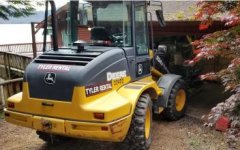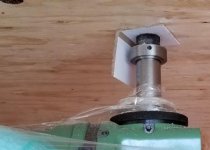Nice Guy
Aluminum
- Joined
- Mar 14, 2020
- Location
- Mom's basement
I recently purchased a 1982 FP2 in excellent condition. I don't think it was a deal but a fair price.
I had to move it from Portland to Alaska Marine lines in Seattle. So I hired a machinery moving company that quoted 4K for that move. I think that's expensive but I wanted it crated and shipped without damage. I emailed the rigging instructions from the manual and confirmed that they were going to block the knee like it said and take off the 400+lb rotary table before shipment. I pointed out that the maximum table load was 800 lbs and that bouncing the machine around with a 400lb load would exceed that if it sees 2G's.
What happened was that they showed up with a flat bed and loaded the mill on the flat bed, without removing the rotary table or blocking the knee. They secured it to the flatbed by strapping over the back end of the table so that any loads the strap saw would be transmitted to the Z axis moving mechanism. Then they drove it through Portland to their warehouse to crate.
What is the chance that the accuracy of the Z axis mechanism would be affected by ignoring the rigging instructions and instead transporting with increased load on the table?
If I check DRO movement vs that on the dial when I change height would that pick up the damage?
If I support the table so it isn't preloaded by gravity would it show up as increased Z axis backlash?

I had to move it from Portland to Alaska Marine lines in Seattle. So I hired a machinery moving company that quoted 4K for that move. I think that's expensive but I wanted it crated and shipped without damage. I emailed the rigging instructions from the manual and confirmed that they were going to block the knee like it said and take off the 400+lb rotary table before shipment. I pointed out that the maximum table load was 800 lbs and that bouncing the machine around with a 400lb load would exceed that if it sees 2G's.
What happened was that they showed up with a flat bed and loaded the mill on the flat bed, without removing the rotary table or blocking the knee. They secured it to the flatbed by strapping over the back end of the table so that any loads the strap saw would be transmitted to the Z axis moving mechanism. Then they drove it through Portland to their warehouse to crate.
What is the chance that the accuracy of the Z axis mechanism would be affected by ignoring the rigging instructions and instead transporting with increased load on the table?
If I check DRO movement vs that on the dial when I change height would that pick up the damage?
If I support the table so it isn't preloaded by gravity would it show up as increased Z axis backlash?













